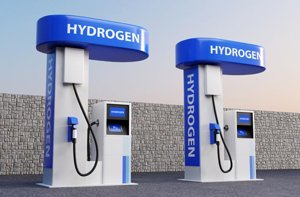
Alternative fuels
Ready to discuss your project?
Please leave your details and a member of our team will reach out to discuss your requirements in more detail and arrange next steps.
Organisations are looking for a more sustainable solution to their fuel needs with particular focus on reducing their carbon footprint.
But which one is right for your business? Every operation’s requirements are unique and what is right for one won’t be right for another.
On this page we talk about sustainable fuels vs fossil-based fuels with a particular comparison of carbon emissions, maintenance, and cost per litre.
Liquid fuels are typically used for powering vehicles, for back-up power generation and heating purposes. We work with logistics organisations, forecourts, data centres and construction companies to help them find the best fuel for their operational requirements, and to maintain their storage tanks throughout their lifespan.
In April 2022 the legislation changed around entitlement to use rebated fuels. This change was the first step on the journey to helping organisations improve their carbon footprint by increasing the energy efficiency of their vehicles and machinery, investing in cleaner alternatives, or just using less fuel.
What is biodiesel?
Biodiesel also known as FAME (Fatty Acid Methyl Ester) is a biodiesel obtained from renewable sources. It is used to extend or replace mineral diesel and gas oil used to fuel on and off-road vehicles and static engines. To help reduce harmful emissions, biodiesel is added to all road transport diesel to meet the UK Government’s Road Transport Fuel Obligation (RTFO). Current forecourt diesel can contain up to 7% FAME (B7), and there are blends that contain 10% (B10), 20% (B20) and even 100% (B100)
Biodiesel is made from fresh, organic matter. It is not a direct drop-in replacement for mineral diesel and is susceptible to oxidation and microbial contamination It is also known to ‘gloop’ at low temperatures, due to its chemical composition.
Modern biodiesel is especially hydroscopic, attracting and holding water molecules from the surrounding environment creating a microbial contamination in the tank (also known as diesel bug).
When water finds its way into a tank because of condensation, rainwater penetration, or from the air, microbes, such as bacteria and fungi, occur at the interface between the oil and water or on the tank walls.
This kind of diesel contamination not only accelerates tank corrosion, it can block lines and filters and significantly reduce the performance of the fuel itself. This can be a particular issue in tanks storing fuel for long periods of time.
What is HVO?
Hydrotreated Vegetable Oil (HVO) is a second-generation biofuel that is made by treating oils with hydrogen. It is produced from 100% renewable waste materials which cuts up to 90% net CO2 emissions and significantly reduces particulate matter (PM) and nitrogen oxide (NOx) emissions.
It can be produced using a variety of feedstocks, including vegetable oils like soy and rapeseed, or waste fats such as animal fats or cooking oils. The production process involves saturating feedstocks with hydrogen at temperatures above 300℃.
The final process is isomerisation, which results in a fuel almost chemically identical to mineral diesel, but with additional benefits.
HVO has more similar properties to mineral diesel when compared to biodiesel and is therefore a drop-in replacement, sustainable fuel.
HVO has several benefits over mineral diesel (fossil-based fuels), and first-generation biofuels.
In addition to its environmental benefits, HVO has a long storage life of up to 10 years and a lower freeze point (-10ºC) than diesel (10ºC).
For most applications, HVO is completely interchangeable with diesel and can be blended in any ratio. If your OEM has approved the fuel, then there is no risk of voiding your warranty.
HVO’s clean burning properties reduce particulate production, which helps improve engine cleanliness and prolong machinery lifetime.
What is GTL?
Gas to Liquid (GTL) is part of the paraffinic family of fuels and involves a refinery process to convert natural gas or other gaseous hydrocarbons into longer-chain hydrocarbons, such as gasoline or diesel fuel. The GTL technology manufactures hydrocarbon products from natural gas using the Fischer-Tropsch process. This process breaks down gas molecules and reassembles them into larger uniform molecules in a carefully controlled manner.
Paraffinic fuels are liquid fuels that can be synthetically created from feedstocks such as natural gas (GTL), biomass (BTL) or coal (CTL); or through hydro-treatment of vegetable oils or animal fats (HVO).
Paraffinic fuels can be used as a blend component in conventional diesel or as a 100% finished fuel.
It has similar benefits to HVO with an equivalent emission reduction. However, the way it is produced and refined is very energy intensive.
These high-quality fuels burn cleaner than conventional crude-oil based distillates and can therefore help to reduce local harmful emissions such as nitrogen oxides and particulate matter without having to change the existing fuel infrastructure.
Broadly speaking, it has the emissions advantages of gas and the convenience of diesel. Depending on the engine type, it can reduce NOx emissions by up to 25% and particulate emissions by up to 38%.
GTL Fuel is well suited to heavy duty markets with limited alternatives to diesel for example construction, rail, public transport, haulage, power generation, marine and agriculture. There are several grades of GTL Fuel available which have been specially developed for off-road and marine applications.
As a direct, drop-in replacement for diesel, no modifications are required to engines, storage or infrastructure when switching.
The fuel also has a better starting performance in cold conditions due to a higher cetane number. Storage is also easier because the fuel has no bio components it is more stable for longer. GTL Fuel is more biodegradable than conventional diesel and tests have shown that GTL Fuel can be classified as ‘readily biodegradable’ and was not detectable in soil 51 days after being introduced.
OEM’s who have approved GTL Fuel for use including DAF, Scania, Caterpillar, Cummins, John Deere, and MAN. The publication of the EN-15940 specification for paraffinic fuels does not automatically mean they are approved by OEMs.
Sustainable fuels vs fossil-based fuels
In this section we compare sustainable fuels with fossil-based fuels focusing on carbon emissions, maintenance, and cost per litre.
However, it is worth noting, the transition away from diesel-distillate will require multiple solutions.
Carbon emissions
Below is a table of how many Kgs of CO2 is produced per litre of each fuel type.
|
|
Emissions (kgCO2e/litre) |
|
Diesel distillate |
2.75857 |
|
Biodiesel |
0.16751 (- 94.1%) |
|
HVO |
0.03558 (- 98.1%) |
|
GTL |
2.36 (-14%) |
Moving to GTL from diesel distillate only achieves a 14% reduction in CO2 emissions. Moving to a traditional biodiesel reduces emissions by 94%. Moving to HVO achieves a 98% reduction compared to diesel distillate.
As we continue on the journey towards Net-Zero, we will still need to consume some fossil fuels for the foreseeable future
It is important to continually conduct energy audits, checks, maintenance inspections to reduce energy demand as much as possible.
The most sustainable form of energy is the one we don’t use.
Maintenance
When it comes to maintenance, HVO and GTL have equal shelf lives of up to 10 years. However, with the hygroscopic methyl esters present in biodiesel, this moisture absorption properties make it susceptible to increased microbial contamination.
It really depends on the application. For back-up power providers such as banks and data centres, where the cost of assets not being able to provide power is substantial, we would recommend a maintenance programme of every 6-12 months to uplift and polish fuel and replace blocked filters if using biodiesel.
With HVO and GTL where there are no bio elements we still recommend a maintenance programme, but without the hygroscopic methyl esters present in the fuel, the frequency can be reduced but shouldn’t be omitted from an infrastructure maintenance program.
It depends on the assets and volume of fuel use.
We can also provide access to fuel while the work is carried ensuring your business continuity and operational resilience is unaffected.
Replacement
HVO and GTL are both drop-in replacements, meaning they are fully miscible with white/red diesel.
When changing fuel grades this is a good opportunity to uplift any surplus fuel and have this polished clean for good measure, have a full clean of the tank, and provide any OFTEC and NDT inspections of the asset to ensure it is completely fit for purpose.
Cost per litre
While HVO is perhaps the most premium priced alternative on the market currently, large investments have been made to support the growing demand and we should see costs level out when compared to mineral diesel.
GTL is more costly than Biodiesel, and slightly lower cost when compared with HVO.
Ultimately it comes down to the respective organisation’s Net Zero strategy and how this is factored into your budget, and how much carbon reduction you want to achieve.
It is worth bearing in mind the security of higher value fuels as an attempted theft could result in a spill and pollute the environment. We recommend leak detection monitoring and alarms as well as having a spill response contract to ensure a fast response in the event of an incident.
We can support you in your unique energy transition and the onward maintenance of your storage assets.
You might also be interested in...
Environmental compliance today, creating a sustainable tomorrow
Helping you reduce risk to the environment and your operation by managing assets compliantly while achieving commercial, ESG, and net-zero goals.
Contact our experts


